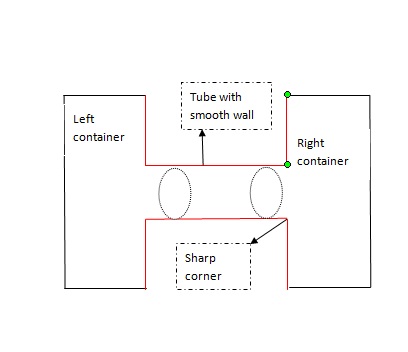Dear all
I want to model fluid flow passing throgh a tube, when the lefthandside and the righthandside of the tube is fluid reservior. (In fact, the geometry consists of two blocks connected by a tube)
I want to use wall model for tube.( by use of fix wall/region command) here is my input script:
dimension 3
boundary p p p
create geometry
lattice fcc 0.7
region simbox block 0 10 0 10 0 10
region wallbox block 4 6 0 10 0 10
region wallbox2 block 3.6 5.6 0 10 0 10
region cylinderout cylinder x 5 5 3 4 6 side out
region cylinderout2 cylinder x 5 5 3.2 3.8 5.8 side out
region wallout1 intersect 2 wallbox cylinderout side out
region wallout2 intersect 2 wallbox2 cylinderout2 side out
region flowreg intersect 2 simbox wallout1
create_box 1 simbox
create_atoms 1 region flowreg
mass 1 1.0
LJ potentials
pair_style lj/cut 2.5
pair_coeff * * 1.0 1.0 2.5
define groups
group flow region flowreg
fix smothwall1 flow wall/region wallout2 lj93 1 1.0 1
initial velocities
compute mobile flow temp
velocity flow create 1 90000 temp mobile
fix 1 all nve
#Poiseuille flow
fix 33 flow temp/rescale 1 1 1 .01 1
fix 22 flow addforce 1 0.0 0.0
timestep 0.001
thermo 1000
thermo_style custom step temp atoms
thermo_modify temp mobile
#dump 2 all xyz 500 ljsmoth.xyz
run 3000000
If you run the code above you see “lost atom ERROR”. i tried diffrent “timesteps” and “boundary conditions” and “epsilon” and “cutoffs” But the Error remained.
in some cases because of going atoms inside of the “wallout2 region” another Error is appeared.
how can i solve the problem?
Thanks in advance
regards
mahdi
